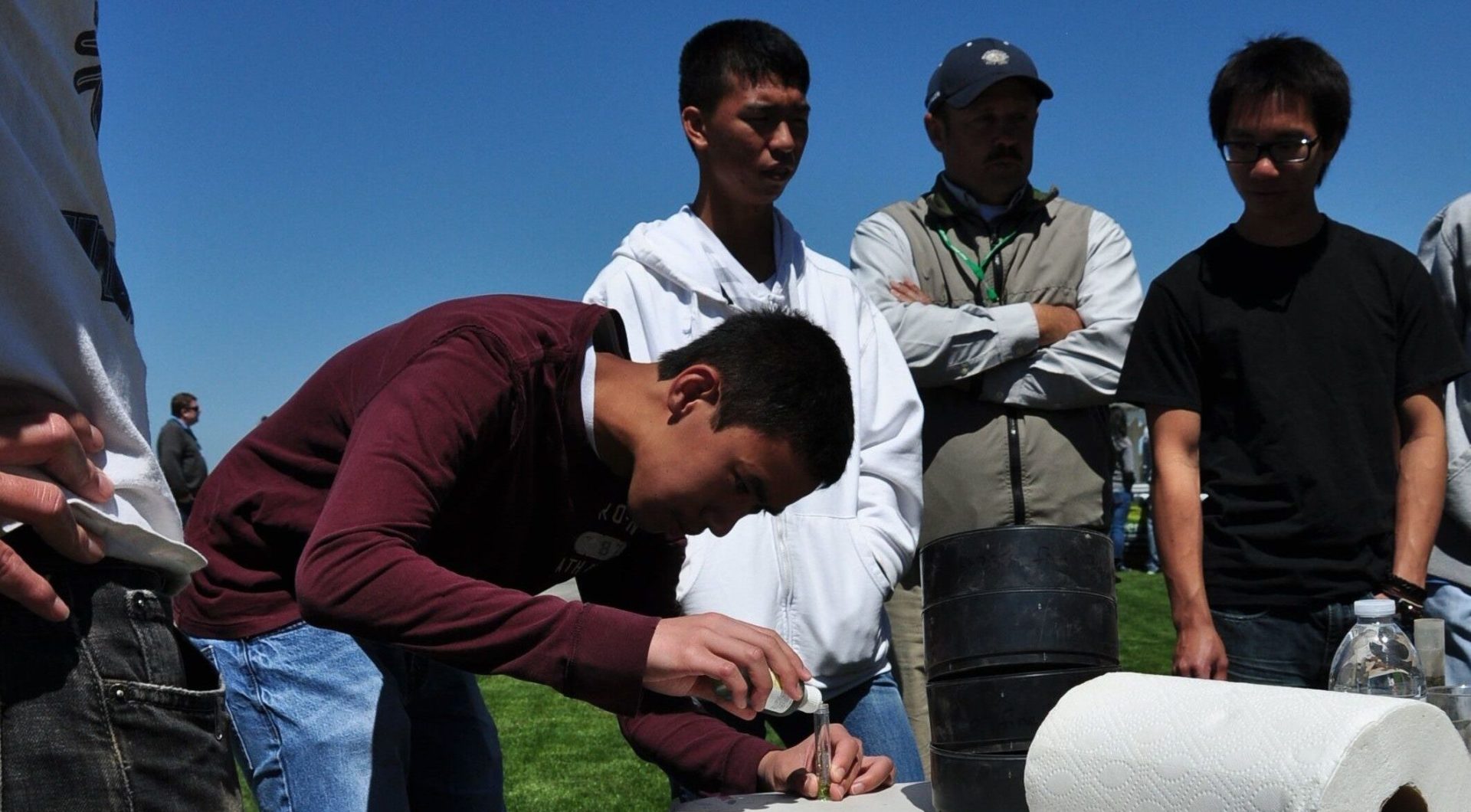The First Green Lesson Plans introduce students of all ages to a variety of STEM concepts that utilize the golf course as a real-world laboratory. Because of the unique nature of these learning stations the lessons can be applicable to young people of all ages. Adults, too!
First Green encourages host superintendents to work with their local teachers to truly dial in concepts that are taught in the classroom. Here are a few activities/lessons that have been conducted in the past.
Math Calculations
- Calculate how many yards of sand are required to topdress a green at 1/16″ on the course. How much sand would it take to topdress 18 greens at 1/8″ depth with a square footage of 125,000. How many tons will it take?
- Calculate how many yards of sand are required to topdress all the fairways at 3/16″ depth. How many tons will it take? (The kids can use Google Earth to figure out the square footage if the superintendent doesn’t have the # of acres.)
- Calculate how many yards of sand are required to fill a bunker on the course. (They can use the formula for calculating the square footage of an irregular shaped object.)
- Calculate how many how many gallons of water are in a water feature on the golf course. ( they will need to calculate square footage first then determine the average depth to find the answer.)
- Calculate how many square feet of cart path are on the front nine of the course they are visiting. ( Google Earth)
- Pythagorean Theorem
- Drawing out the rectangle on paper then divide it into two right angle triangles.
- Discuss how knowing the length of the hypotenuse can help you lay out a rectangle with 90-degree corners.
- Describe examples of laying out tee boxes or soccer fields.
- Using irrigation flags, lay out a rough rectangle, measure the length and width then determine what the hypotenuse should be by calculation.
- Measure across the rectangle and see how close the length is to the actual calculation.
- Adjust until the rectangle is correct.
Irrigation System
- Calculate how gallons of water are used to water the putting green of the course they are visiting. Assume the sprinklers run for 9 minutes each.
- Have the kids meet with the superintendent and have him/her explain how the on-site weather station works. What is ET? How is ET calculated?
- Have the kids do an irrigation uniformity test on a green. Place 16 used tuna cans (or another suitable container) evenly spaced across the green. 4 rows of 4 cans works well. Run the green sprinklers for 10 minutes then measure how much water (how many ounces) is in each catch can. What are the factors that cause the difference in the amount of water in each catch can?
- Look at the velocity of how water moves through irrigation pipes on the course. Look at how elevation changes pressure in a given area ( both lower and higher elevations) as compared to the pressure at the irrigation pump station.
- How many sprinkler heads can safely run on a 2-inch lateral line? ( the kids will need gallons per minute used by each head on that lateral line).
- Have the superintendent explain how the VFD pumps work. Look at a map of the sizes of pipe in the ground. Why is the pipe sizing the way it is? What is the water window? How long does the system run at night? How do different soil types on the course affect the irrigation run times?
- How does slope affect irrigation times? Sun vs shade areas on the course.
Perched Water Table
Using acrylic cylinders, demonstrate a perched water table (USGA style green). If you have the time it is a great activity to have the students help you build the models and pour the water through the cylinders.
- Discuss benefits for constructing a green in this manner.
- Water holding capacity
- Flushing salts from the profile
- Using sand and gravel, construct a sample cross section of a green core.
- Pour water in the cylinder and discuss the results.
- Terms to discuss
- Field Capacity
- Bridging soils
- Choker layer
- Sand specification

